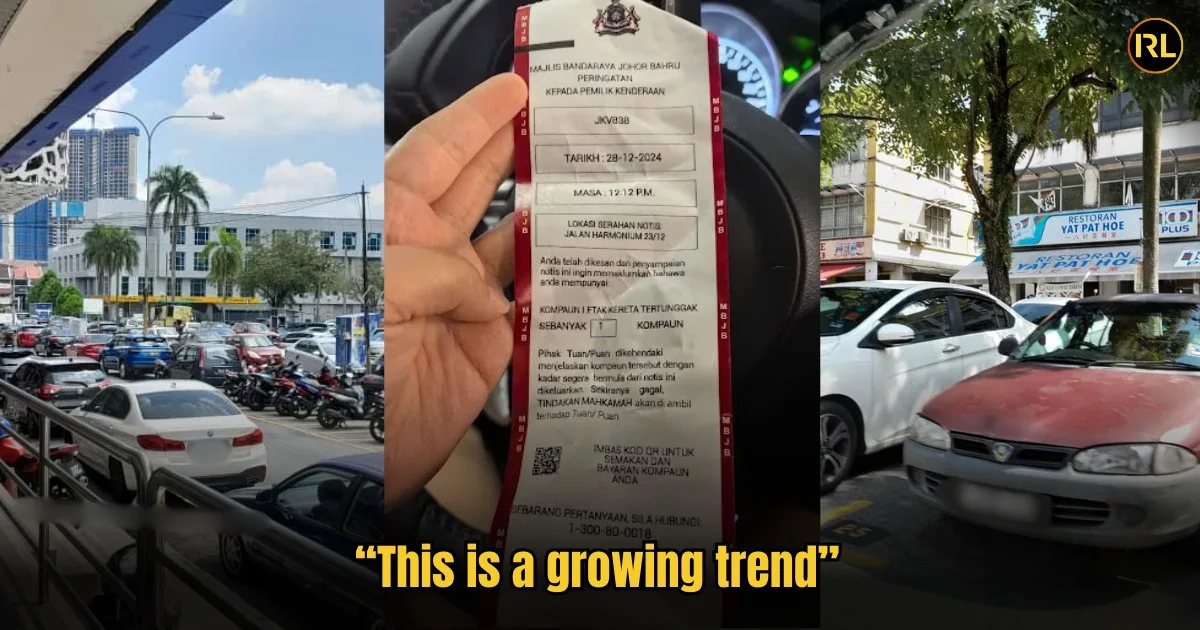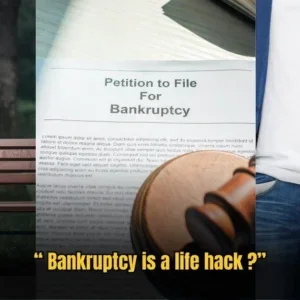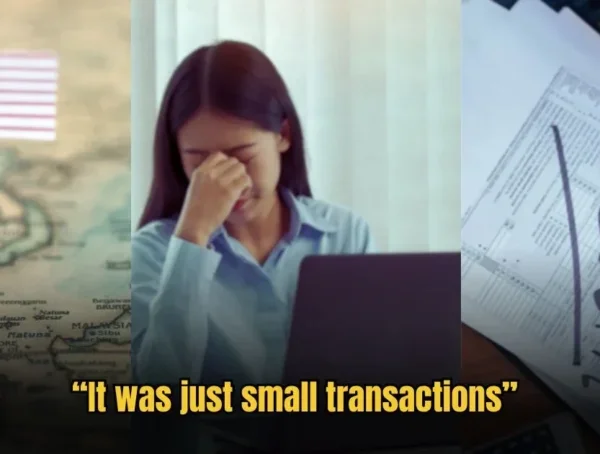
This story is about a Malaysian driver who had his banking details and RM3,000 stolen by a fake parking fine with a QR code in Johor Bahru.
I never thought I’d fall for a scam. I was the type to scoff at people who did, thinking, How can anyone be so gullible? But that confidence was shattered one ordinary afternoon when I became a victim myself. What stings the most is how the scammers managed to blindside me, leaving me embarrassed, frustrated—and RM3,000 poorer.
Step 1: The Fake Parking Fine
That day started like any other. I parked my car on a busy street to run errands and returned two hours later to find a parking fine tucked neatly under my windshield wiper. The notice was convincing, complete with the town council’s logo and an urgent warning about an overdue fine of RM50.
The ticket included a QR code for payment, a convenient option that would save me the hassle of going to the council office. I was annoyed at getting fined, but with my packed schedule, paying it off quickly seemed like the easiest solution.
I scanned the QR code, which directed me to a website that looked exactly like the official payment portal. Everything was there—the council logo, the payment interface, even pop-up warnings about overdue fines. It all seemed so legitimate. Without a second thought, I entered my debit card details and keyed in the OTP sent to my phone.
But instead of a confirmation message, I got an error: “Transaction failed. Please try again.”
Frustrated, I tried again, using a different card this time. When the same error appeared, I decided to call the hotline printed on the ticket.
Step 2: The Suspicious Call
A man answered promptly, introducing himself as part of the council’s customer service team. His voice was calm and reassuring. He suggested I try again, saying, “Sometimes our system has glitches, cik. It’s nothing to worry about.”
Something about his tone comforted me. But when I wanted to check with my bank, he became more insistent. “Maybe try another bank or an e-wallet. Sometimes specific banks have issues with our portal,” he added.
That was the first red flag. A legitimate customer service agent wouldn’t push so hard or discourage me from checking with my bank. My instincts kicked in, and I told him I needed to confirm things with my bank first. Suddenly, his tone shifted—becoming overly persuasive. “Cik, this has happened to others today too. Don’t worry. It’ll go through. Just try again quickly.”
It was then I realized something was seriously wrong.
Step 3: The Devastating Discovery
Ignoring his attempts to keep me on the line, I opened my banking app. My heart dropped. Two deductions of RM1,500 each had already been made from my account.
My hands were trembling as I called my bank’s fraud hotline. The customer service agent confirmed my fears: the QR code I had scanned was part of a phishing scam. The fake portal had captured my card details and OTP, allowing the scammers to drain my account.
The bank quickly froze my cards, but it was too late to recover the stolen RM3,000. They advised me to lodge a police report and promised to investigate, but their tone suggested I shouldn’t hold out much hope.
Step 4: Reporting the Scam
At the police station, I sat across from an officer, recounting the entire ordeal. I felt ashamed and foolish, but the officer reassured me I wasn’t alone. “This is a growing trend,” he explained. “They target busy areas, knowing people won’t question the fines too much.”
He pulled out examples of fake tickets they’d collected from other victims. The differences were subtle: thinner paper, slightly misaligned logos, and a lack of critical details like the vehicle make, model, or plate number. “Real parking fines will always include these,” he said. I realized the ticket I had received was missing those details, but in my rush to pay, I hadn’t noticed.
Step 5: Lessons Learned
I spent hours replaying the events in my mind, berating myself for missing the signs. But hindsight is always clearer. Here’s what I wish I had known:
Tip 1: Read the parking ticket carefully: Real parking fines include specific information, such as your car’s make, model, and plate number, as well as the location and time of the violation. Missing details are a red flag.
Tip 2: Always pay fines through official apps like MyBayar PDRM. You can also pay your fine by visiting the council’s website directly.
Tip 3: Check the QR code. Scammers often stick their QR codes over legitimate ones.
Tip 4: Keep track of your bank account transactions: Set up transaction alerts to catch unauthorized deductions immediately.
The Aftermath
The financial loss was hard to stomach, but the emotional toll was worse. I felt humiliated, even paranoid, for weeks afterward. I scrutinized every email and notification, terrified of falling for another scam.
To warn others, I posted about my experience in a local Facebook group. To my surprise, several people commented that they had seen similar fake tickets but hadn’t fallen for the scam. I felt stupid at first, but their support made me feel less alone.
Looking back, I realize this experience has made me more cautious. I now triple-check everything before making payments and hope my story can help others avoid the same mistake.
If you ever receive a parking fine with a QR code, stop and think: Does this look too convenient to be true? Trust me, it’s better to be cautious than to lose your hard-earned money.
Have you been through a similar experience? Share your story with In Real Life!
Submit your story to ym.efillaerni@olleh and you may be featured on In Real Life Malaysia.
Read also: I Was Tricked Into Buying Gift Vouchers Worth RM2000 by a Scammer Posing as My Boss – In Real Life
I Was Tricked Into Buying Gift Vouchers Worth RM2000 by a Scammer Posing as My Boss
More from Scams
“I Lost RM10,000 to a job scam,” shares 29 YO Unemployed M’sian Woman
This is the story of how an unemployed woman, despite being highly qualified, lost almost RM10,000 in this scam that …
“I got scammed out of RM13k by a fake rental,” shares 35 YO M’sian woman
This is the story of how a Malaysian woman was scammed by a fake agent while trying to rent a …
27 YO M’sian woman who lost RM8,000 shares,“I never thought a young person like me would become a victim”
This is a story of how a young Malaysian woman in her 20s was a victim of a debit card …
















